GOOD FOR CROPS, GOOD FOR THE EARTH
How to be a Good Gardener/Farmer, Simplified
“The poor farmer grows weeds, the mediorcre farmer grows crops, the good farmer grows soil.” How true, when I think of the good farmers and gardeners I’ve visited over the years. I aspire to be a good farmdener and spend a lot of time trying to grow soil.
Growing soil isn’t all that complicated. (You do need to start with good drainage of water.)
First, keep the ground covered. Organic mulches, such as leaves, straw, and wood shavings, keep rain from pounding the surface. The pounding drives small soil particles into pores, sealing the soil surface so water can’t percolate in. Bacteria, fungi, worms, and other soil organisms gobble up organic mulches, releasing nutrients and forming humus, which improves percolation and moisture retention, and makes room also for air in the soil. In my gardens, I never want to see bare ground.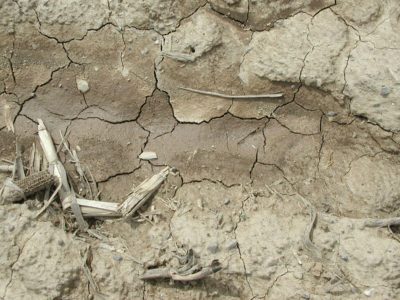
Live plants likewise protect the ground. The plants might be cabbages, marigolds, carrots, and other garden plants. They might be cover crops, such as rye, oats, peas, or buckwheat, sown specifically to clothe and protect the ground during or at the end of the growing season, and through winter. They might even be weeds — Mother Nature’s way of protecting her soil.
Second, maintain soil organic matter. Mulches do this, as do growing plants. I go one step further, and import organic matter. Bushel after bushel of leaves that have been raked and bagged by neighbors are collected are unbagged and unraked once they arrive here. Leaves that have been vacuumed into a landscaper’s large truck and then left here in a pile get unpiled here one pitchfork and garden cart at a time.
I also pitchfork horse manure into the bed of my pickup truck at a local stable. Mostly, that manure is transmuted into compost and then slathered onto beds in the vegetable garden.
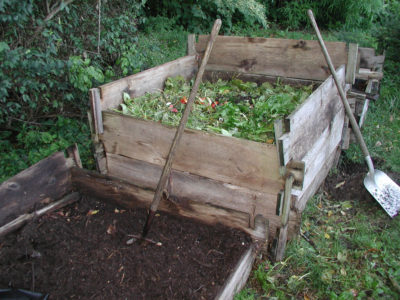
Compost, in the making
I also import — really just transfer — some organic material from one part of my property to another. My small hayfield gets mowed once a year by tractor to keep it from becoming forest but parts of it I periodically scythe, these mowings to feed, along with the horse manure (and kitchen waste, old garden plants, etc.), compost piles.
The third key to growing soil is to maintain fertility. A soil test can confirm what, if anything, is needed. If the first and second points in growing soil are followed, fertility is probably up to snuff.
And finally, the fourth key to growing soil: Minimize soil disturbance, avoiding tillage or, at least, excessive tillage. Tillage mixes so much oxygen into the ground that soil organisms go into a feeding frenzy, in so doing gobbling up organic matter too fast. Thus, many of the above benefits, physical, biological, and nutritional, waft away, literally, as carbon dioxide.
Farming and gardening aren’t “natural.” At their best, they are a balancing act that leans towards emulating natural systems. Which is to say, for instance, that tillage, is not all bad; it can be part of good soil growing if not done to excess and points one, two, and three are followed.
A measure of “organic matter content” (OMC), from a soil test, provides a rough indication of soil growing progress. Less than 3% means more work is needed. Five percent, or more, is very good. (My vegetable beds are at about 15%.)
Blue-Green Algae Redux
Last week’s notes about the darker side — and the brighter side — of blue-green algae may have left everyone feeling helpless. After all, you can’t change the hot dry weather that is, in part, responsible for the current blooms. But nitrogen, phosphorus, and other minerals washing into waterways to feed the bacteria also play a role, and it’s something over which we have control.
Improper septic systems are one culprit.
More topical culprits are mineral nutrients originating in backyards and farm fields. Too many farmers and homeowners subscribe to the philosophy that “if a little is good, more is better,” when it comes to fertilizer. Not so. Too much fertilizer not only is a waste of money; it damages or kills plants and, with rain, leaches through or runs off the soil to eventually find its way into waterways. A soil test will tell what nutrients, if any, are needed.
Even better, if fertilizer is needed, is to use an organic fertilizer. Most are not water soluble until metabolized by soil organisms, which means they are less likely to wash through the soil.
Better still would be to use compost to provide fertility. Nutrients in compost are locked up physically and chemically, waiting to be released by soil life in synch with plant uptake and growth.
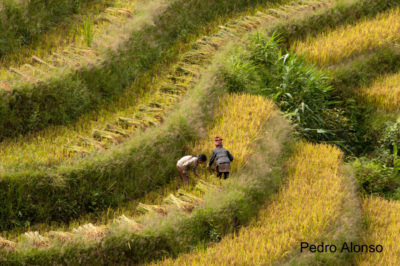
Terraced field in Viet Nam
Phosphorus is a plant nutrient that binds tightly to soil granules, but makes its way downhill when rain washes over bare soil to move it downslope. One way to keep this nutrient out of waterways is to keep the soil covered with mulch or vegetation, especially on sloping land. Another way is to avoid exposing soil by tillage. Another way, if tillage is needed, is to till perpendicularly to the fall line of a slope. And yet another way is to alternate tilled areas with grassy strips to catch and hold soil.
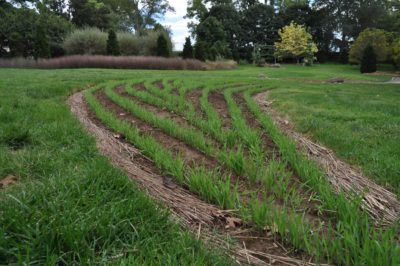
Rye cover crop
Do a lot of these recommendations — mulches, cover crops, composts, no-till — for preventing blue-green algae blooms sound familiar? Good gardening and farming practices are also good for the environment.

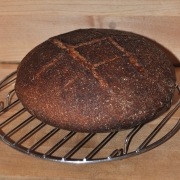


A patient once said I should be careful of the chemicals they use to wash / clean horse stables with if I want to garden organically. Any insight to this?
It’s hard to say without knowing hat those chemicals are.
Excellent Lee! I am happy you point out good septic systems. Here in upstate NY there are many lake and river properties and I can not say enough that it is a responsibility of waterfront property owners to take care of their septic systems! I have a huge pile of plant matter (so much so I’ve resorted to hauling my weeds to the dump in compostable bags) and when I dig beneath it, there is beautiful black soil. You can bet that soil is topping off firstly my vegetable beds and then moving on to the perennial and mixed garden beds. There is so much life in my soil and I take that as a good sign!
All great advice. And it is really quite simple once you understand it.
Greetings, I am have finally had my soil tested as I prepare to plant some blueberry bushes. The local extension service indicated my soil was extremely high in phosphorus, saying a result of non organic fertilizer. I am shocked, I use organic fertilizer. However several years ago I added what was said to be composted horse manure, but I think had too much stable shavings. Anywho, is there a way to amend this soil and get blueberries going? the level was over 500. Thanks for your consideration. I heard you on a podcast several years ago and am preparing to create a tasty backyard.
I’m not so sure that extremely high phosphorus is a problem. Mine is also, the result of copious amounts of compost being added to the soil over many years. My plants grow fine. Waeberries?s the extension person indicating that high phosphorus was bad generally or just for blu
Thanks much for your response. Oklahoma State University, Tulsa County Extension is where the soil was tested. The test results just say “excessive” for phosphorus, I must have been influenced by a Google search that stated excessive phosphorus, over 300, could affect plant growth, limiting nitrogen availability. I was wrong, OSU just stated phosphorus as excessive, explaining build up over a long period of time.. pH was 7.4
You obviously need to lower your soil pH to 5.5, or lower. Use pelletized sulfur, a naturally mined mineral, 1.5# per hundred square feet if you soil is sandy, 3 times that amount if it’s clay.
Dr. Reich, I truly appreciate your input and advice and will keep an eye out for the blueberry webinar. Can I use the pellatized sulphur now to amend the soil and actually get plants in the ground, here in Tulsa, or should I amend the soil and wait to plant in the Fall? (last question)
thanks much jeff cowen
Use it down and mix it in with the soil in the planting hole.
Greetings, i recently cleaned up my overgrown garden, by weedeating, fertilizing then covering with cardboard, leaf mulch and cedar mulch. This is where i planted blueberries, but recently read that bagged cedar mulch is bad because of the tannins. Is this true? I used a soil acidifier and have been keeping them moist, and am seeing new growth.
I’m now sure about the tannins although I don’t see why they would be a problem. If in doubt, don’t use it. Leaf mulch, such as you are also using, is fine. Aa an aside, I would have used some paper product rather than cardboard; the cardboard takes too long to decopose so creates a long lasting barrier between the soil and the mulch.
Thanks much for your input and response. I had first heard you on Living Homegrown and enjoyed your style.
I got too anxious and put the cardboard barrier down, i can amend.